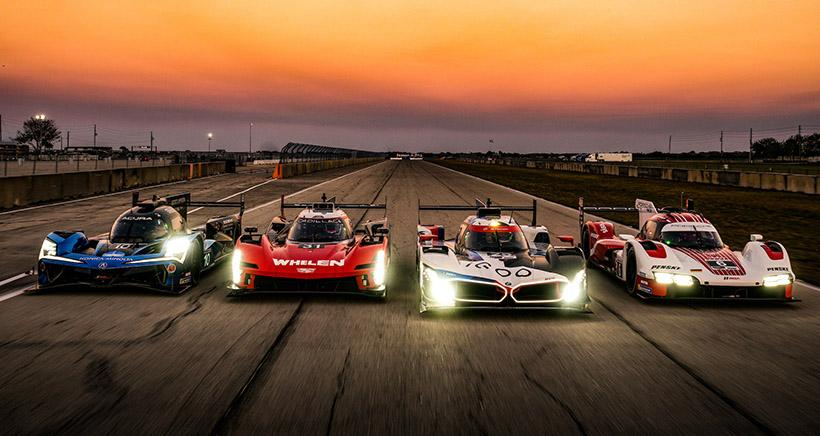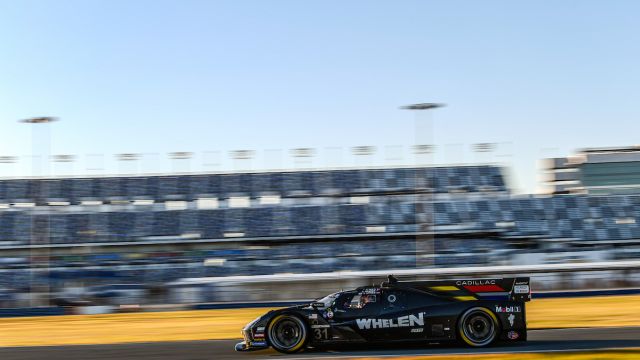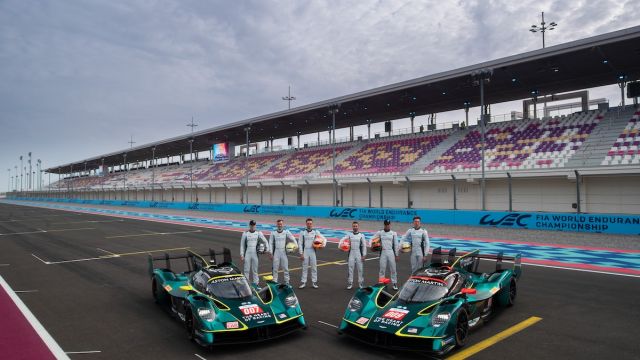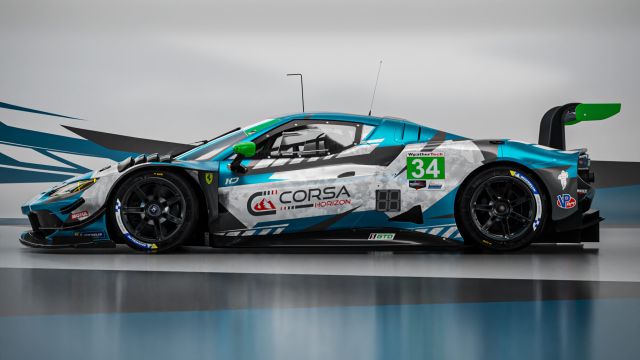GTP Manufacturers Chose Different Paths for Engine Design
There is, undoubtedly, some complexity that goes into powering some of the most technically sophisticated racing cars in the world.
Acura, BMW, Cadillac and Porsche tested and developed the LMDh prototypes of IMSA’s new top class, Grand Touring Prototype (GTP), which debuted in January at the Rolex 24 At Daytona, the opening round of the 2023 IMSA WeatherTech SportsCar Championship.
Two key factors influenced that quartet of manufacturers (along with Lamborghini, which will join the WeatherTech Championship in 2024) to pursue LMDh programs: the ability to incorporate their own styling cues into the bodywork, and almost total freedom in configuring the internal combustion engine (ICE) mated to the IMSA-mandated hybrid Energy Recovery System (ERS).
As a result, all four of the new designs look unique. They all sound different as well, because each of the manufacturers has chosen its own path to power, with four significantly different solutions.
Section 5.2.1 of the 2023 IMSA Technical Regulations stipulates that engine design is free, except for the following restrictions:
- Only petrol (gasoline) four-stroke engines are permitted
- Air springs are allowed
- VVT (variable valve technology) is allowed
- ICE speed is limited to 10,000 rpm
- The sound emitted from each car must not exceed 110 dbA (A-weighted decibels) during all on-track sessions.
There are a few more areas of commonality. The maximum engine length (from the rear of the survival cell (chassis) to the front of the bellhousing) is 640 millimeters, or 25.2 inches, with a minimum weight of 180 kilograms (396 pounds). The other key dimension is a minimum crankshaft center line height of 106 mm (4.17 in) common to the input shaft of the Xtrac P1359 gearbox and other elements of the ERS mandated for all competitors.
The combined output of the ICE and the ERS is 480 to 520 kilowatts (644-697 horsepower), measured at the driveshafts by mandatory torque sensors, and subject to Balance of Performance adjustment.
With those loose limitations in mind, Acura’s solution was a twin-turbocharged V-6 engine. Porsche and BMW chose turbocharged V-8s, while Cadillac took the traditional American route with a larger, naturally aspirated V-8. Let’s look in greater detail.
ACURA ARX-06
Acura utilized a 3.5-liter twin-turbo V-6 based on a production engine for its ARX-05 prototype that claimed the Daytona Prototype international (DPi) championship in 2019 and ’20. For the new LMDh regulations, Acura’s technical parent Honda Performance Development (HPD) opted for a clean-sheet, pure racing design, downsized to 2.4 liters.
Like all LMDh engines, the Acura AR24e has been designed to run on low-carbon, sustainable fuel. The engine features a 90-degree vee angle, along with electronics and fuel management software developed from Honda’s experience with energy recovery systems in Formula 1. Redline is 10,000 rpm.
“We’ve taken the challenge presented by this new rule package from IMSA and developed what we believe is a very competitive solution,” said Pierre Descamps, HPD’s project leader for IMSA powertrain design. “It’s still a V-6, which of course for Honda is well-known, but we have incorporated several new elements which we believe will make best use of the electric MGU (motor generator unit) and battery pack.”
BMW M HYBRID V8
The BMW P66/3 is a 4.0-liter, twin-turbocharged V-8 with a 90-degree vee.
The P66/3 maintains the same architecture of the original P66 engine which was used in other sports car series, but with technological updates like direct injection and the key addition of twin turbochargers. Redline is 8,200 rpm.
Ulrich Schulz, head of drivetrain design at BMW M Motorsport, said that BMW also considered adapting the turbocharged four-cylinder engine used most recently in the DTM series, along with the naturally aspirated V-8 in from the M8 GTLM that competed in the WeatherTech Championship. BMW utilized knowledge gained in Formula E to integrate electrification into the powertrain.
“Converting the normally aspirated P66/1 engine into a bi-turbo and then working with the electric drivetrain colleagues to turn it into a hybrid drive system was very complex,” Schulz stated. “It is a huge plus that we were also able to make use of existing materials such as steel and aluminum from BMW’s time in Formula 1 for the basis of the engine, as well as for individual components – like shafts, housing and small parts. That saved us time and a lot of money and was therefore efficient and sustainable.”
CADILLAC V-LMDh
Cadillac’s engine for the latter portion of the WeatherTech Championship DPi era was a naturally aspirated 5.5-liter V-8 maintained by Earnhardt Childress Racing. The new Cadillac LMDh-V maintains that size and configuration, but it’s an all-new design created in-house by General Motors.
Some elements are likely shared with the 5.5-liter V-8 that powers the Corvette C8.R that competes in the WeatherTech Championship GTD PRO class. But where the Corvette engine features a flat plane crankshaft that creates a high-pitched, wailing exhaust note, the Cadillac motor has a cross plane crank and a soundtrack somewhere between a rumble and a roar (at less than 110 dB, naturally).
With the learning curve that comes with heading into IMSA’s new electrified era, the normally aspirated Cadillac – without the complexity of turbochargers and various ancillaries – could hold an advantage early in the 2023 season. Cadillac Racing completed a 24-hour endurance test at Sebring International Raceway in December prior to its third-, fourth- and fifth-place showings in the Rolex 24.
“To complete that endurance test was extra motivation for our team and provided a sense of accomplishment,” said Cadillac Racing Program Manager Laura Wontrop Klauser.
PORSCHE 963
Like BMW, Porsche already had the fundamental basis of an LMDh engine to work from. The 90-degree architecture originally appeared in 3.4-liter, normally aspirated configuration in the Porsche 718 Spyder that Team Penske used to win three consecutive Le Mans Prototype 2 (LMP2) championships from 2006-08.
Enlarged to 4.6 liters and paired with two electric motors, the engine served as the powerplant for the Porsche 918 Spyder, a flagship road car of which 918 units were produced from 2013-15.
For LMDh, Porsche boosted the 4.6-liter V-8 with twin turbochargers that revs to the maximum allowable of 10,000. The marque incorporated additional learning from Formula E and the 919 Hybrid prototype, which earned three consecutive victories at the 24 Hours of Le Mans from 2015-17. The 919 Hybrid utilized a 2.0-liter turbocharged V-4 engine and Energy Recovery System proprietary to Porsche, whereas the “hybrid” portion of the 963 is the standard ERS shared by all LMDh competitors.
Porsche was very ambitious with its preseason endurance testing, attempting a 36-hour run.
“It’s a much more complex car that needs more engineering support,” said Volker Holzmeyer, CEO of Porsche Motorsport North America. “This project has many more stakeholders than any project before, because of the standardization. The hybrid system is coming from a partner; that’s a stakeholder, and it’s not like everything is controlled by Porsche.”






Comments
Log in to comment the article